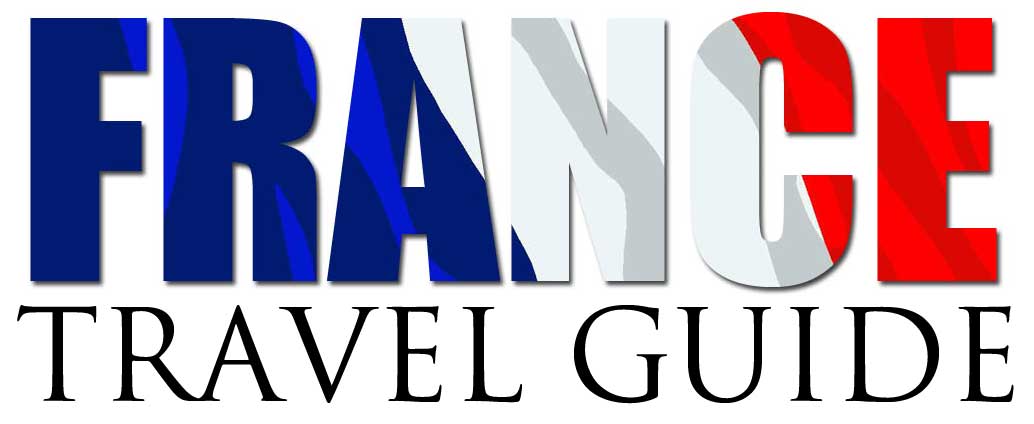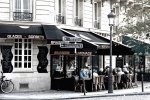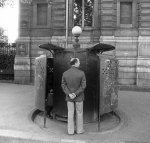driving tips
For many visitors, taking your own car to France has considerable appeal. Of course, you have to be willing to mix it with the French, driving, for Brits, on the wrong side of the road.
If this is not for you, then don't even think about it.
But there are attractive aspects to taking your own car,
over and above the familiarity of a vehicle you know.
You have greater freedom to go exactly where you want, stop when you want, vary your journey as the mood takes you, and take more items from home than you could realistically carry without a car, especially kitchen items - I hate using other people's blunt kitchen knives!
So, here are a few tips about taking your own car.
1. Prepare the car
Make sure it is in good running order, ideally recently
serviced, all fluids topped-up, and, especially, tyre pressures correctly
adjusted to allow for heavier than normal loads. Take care to ensure that you
don't obstruct mirrors, the left wing mirror in particular, but it is always
better not to fill the rear of the car to the extent that you can't use the
interior rear mirror. If the front seat passenger is also a driver, it does no
harm to install a temporary stick-on mirror on that side of the car, just as an
additional safeguard.
2. Compare ferry costs
Be flexible about which crossing you will use. Spend some
time costing the various options. The cheapest and quickest way of taking a car
to France is on the Dover-Calais route, but if you are heading for the west
coast of France, then the extra driving distance over, say a ferry to
Ouistreham (Caen) or Cherbourg, can be a cost factor, especially if toll roads
are involved.
The website of Ferrysavers (www.ferrysavers.com), allows you to
compare prices for different crossings without having to check all the
operators' sites. You might still want to confirm separately that Ferrysavers' prices
correctly reflect the operator's costs. There are often special deals that do
not always carry over onto price comparison sites.
Read 'Ferry-Wise'.
3. Avoid overnight
crossings
A cabin on a ferry can be more expensive than a stopover en
route in a hotel of one of the budget chains. Moreover, if you're a light
sleeper, the constant sound and vibration of a ferry in motion will keep you
awake.
Overnight ferry travel will not suit anyone who is
unaccustomed to late nights and early mornings. There are hotels at or near all
the ferry ports, and much to be said for daytime travel, followed by a relaxing
evening.
4. Toll routes
If you're in a hurry, then the quickest way is to use the
autoroutes, and pay the tolls. But if time is not of the essence, then a more
leisurely drive, avoiding autoroutes can save a fair amount of money.
Tolls (péages) can be a bit of a fright if you're not expecting them. The website - www.mappy.com (only in French) - calculates both the tolls and the cost of fuel for any given journey. For example, driving from Ouistreham (Caen) to Bordeaux, in an average sized car is 616km using autoroutes; fuel (diesel) will cost around €60 with toll charges about the same (€60). Do the same journey avoiding the toll routes and the journey time goes up by over an hour, but the distance comes down a little to 590km, fuel also drops (to €55), and you save €60 by not paying tolls...in each direction, that's €120 (about £95).
A word about péages: as you approach toll gates on the main carriageway, there are changes to the speed limits that must be observed. Some, but not many, have toll booths for UK drivers (especially near the ferry ports), but most are for left-hand drive vehicles. This means that it is the passenger who has to pay the toll. If you're travelling alone, this can actually be quite awkward, particularly if you can't comfortably reach across. Don't be afraid of getting out of the car and walking round to pay the charge; the person in the car behind you won't like it, but...
As you enter the start of a toll section, then all you need to do is collect a ticket from a machine and drive on. Keep the ticket handy for payment at the other or of the toll section, or if you leave at an intermediate entrance.
The toll stations have numerous lanes, with coloured signs above them, indicating which lanes are open, which have an attendant (don't forget to say 'Bonjour'), which take credit cards, etc. If you do use a credit card, bear in mind that the machine is very quick; it takes the card in and spits it out almost immediately; job done, drive on. Approach slowly, decide on the lane, and then take care if you have to change lane.
See also autoroutes. The website autoroutes.fr is an official site from the association of French motorway operators, with a real-time traffic map.
5. Avoiding traffic
congestion
The French government's Bison Futé website gives information on current traffic conditions, with predictions of levels
over the year (Calendrier des prévisions) – invaluable for avoiding the worst
weekends – as well as for the coming weekend (Prévisions pour le week-end).
6. Check fuel prices
Is it cheaper to buy fuel in France? Yes and No. Diesel
tends to be cheaper, petrol about the same, or a little more expensive. But
this is variable. The French government website gives an overview of the cost of fuel at stations all over the country –
although using it requires patience and dedication. Unsurprisingly, the site
reveals that the most expensive fuel by far is that sold at motorway service
stations; the cheapest is at the supermarkets.
7. Car insurance
Check before you
leave that your usual car insurance company covers you for use in France. It is
the norm these days - it's what is called Green Card Cover - but check, and, in
any case, let the insurance company know that you are taking your car abroad.
8. Buy European breakdown
insurance
If your car breaks down abroad, you could be in for a hefty
bill – especially if it needs to be moved from a motorway. The AA and RAC both
offer European Breakdown Cover. But premiums and benefits vary hugely, and it
can sometimes be cheaper to buy insurance cover for a year, than just for a few
weeks, even if you don't use the annual cover again. Comparative quotes can be
obtained through Worldwide Insure (www.worldwideinsure.com). Bear in mind that if you break down on an autoroute, your European Breakdown Cover doesn't cover you, because autoroutes are privately owned. If you can, drive off the autoroute, before ringing for assistance.
Recent Articles
-
French Food and Drink - No BS Guide for lovers of Food, Wine, Liqueurs
Aug 28, 19 03:18 AM
Our guide to French food and drink for those who love traditional French food along with our no BS guide to understanding French wine and liqueurs
-
Things To Do In Carcassonne The Ultimate Tourist Guide
Aug 24, 19 06:26 PM
The ultimate tourist guide to things to do in Carcassonne when you visit this wonderful town in Aude France. Discover the places to go and see in Carcassone.
-
Lyon Old Town Guide to Vieux Lyon
Aug 18, 19 07:48 AM
Your complete guide to Lyon old town otherwise known as the Vieux Lyon. Don't miss this amazing part of the city if you're visiting Lyon in France.
-
18 French Villages You Must Visit Most Beautiful Villages in France
Aug 17, 19 06:31 AM
Our guide to the 18 most beautiful French villages you simply must visit. Loads of info, photos and facts in our ultimate villages in France tourist guide
-
What a Pissoir - The True Story of France's Unique Urinals
Aug 13, 19 03:47 PM
Is there anything more French than a pissoir? Sadly on the decline nevertheless the pissor is an endring image of the country. This is their story





